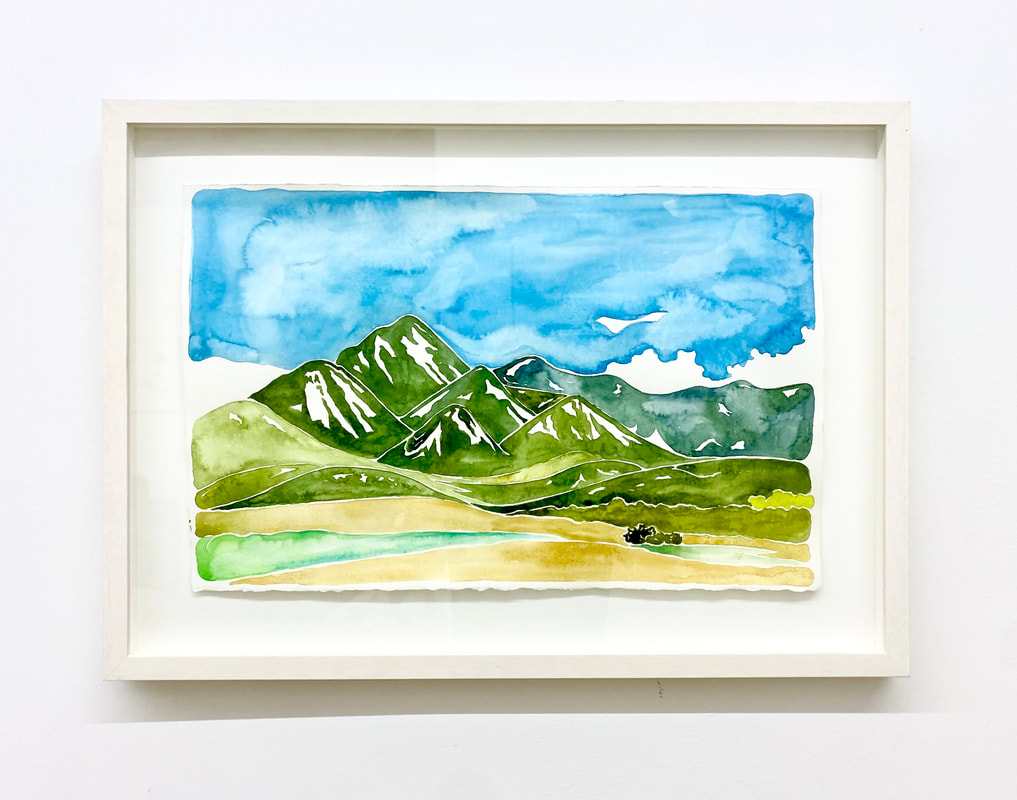scott winterrowd: sites revisited
February 19 - March 19, 2022
Press Release
|
Ro2 Art Gallery is proud to present Scott Winterrowd: Sites Revisited. The show will run from February 19 through Mach 19, 2022, with an opening reception held at Ro2 Art in the Cedars, located at 1501 S. Ervay St., Dallas, TX, 75215 from 7-10pm.
In this latest body of work, Scott Winterrowd ventures outdoors to national parks such as Tyler State Park, Mesa Verde National Park, and Colorado Bend National Pareto bring inspiration to his loose watercolor painting and mark-making, combined with his lean towards realistic representations of the landscape that is presented in reality. Winterrowd finds inspiration from his encounters with landscapes that have been sacred sites of the southwest, where ancestral Puebloan cultures left their mark, as well as where the earth has eroded leaving curious forms and configurations within its surface. |
artist statement
|
With the exception of a couple of works, almost all of the paintings in this exhibit were made in March of 2020. My first venture outdoors after the pandemic hit was to Tyler Lake State Park (as son as the state parks reopened), one of my favorite regional haunts. Due to my reticence to fly, many of the works here are sites I have returned to again and again. I am always inspired by the sacred sites of the Southwester where the Ancestral Puebloan cultures left their marks and their dwellings as an embedded part of the landscape. When I visited Mesa Verde National Park in 2020 for the first time in 40 years, it was shocking to find the park almost as deserted as the dwellings had been for many hundreds of years. The sites here are most of New Mexico, which I visited twice in 2020 and Big Bend in 2021. I didn't go in with a plan of what I was going to paint, but I did fill my sketchbooks with a number of vistas I have documented before. I and rain to landscapes in nature that already look abstract. I am fond of abstraction in art but personally tend towards laying down a realistic representation of the landscape. Because of this issue, I have gravitated toward landscape views that seem to be unreal and quite bizarre. One of my favorite places that I have visited are the karst formations of Colorado Bend State Park, in particular, Gorman Falls. A large 70-foot-high travertine mound that is formed by a natural spring waterfall that filters down through bizarre formations that have a created rocky, riparian landscape that empties into the Colorado River in central Texas. This past visit, the formation was largely visible due to the winter and the drought, with only small traces of the falls on the sides of the mound. Another place I really love is a site along the river road not far from Redford, TX where the turf has eroded into the most curious forms. A few views here are sites where well-known 20th century artists have worked.
Because of my tendency to tighten up my work, I am always striving for a more immediate, loose style when approaching a subject. Many of the images I paint are based upon a specific view of tree and I know immediately how I want to capture it. Often it is a quick linear pen drawing that often informs scale and relationships based on how I initially see and interpret the scene. I usually follow up with a more extended drawing/painting (which I would still classify as a sketch) and of course document the view with photography. The finished works on view in this exhibit happen back home in the studio, based on the sketches and the photographic image. I am always thinking about the medium I use and specifically the support, and I try to exploit the use of the white paper in my compositions. The negative space, and the fine white lines left on the paper, are most important as I consciously lay down shapes side by side. I also gravitate toward color tonalities and compliments in the paintings. People often ask if I do the ink drawing first when they see my paintings, but the drawing is always made after the paint is laid down. The forms laid down by the brush inform the linear work in the final composition. While working on a painting, the final product, with the linear drawing, is always clear and present in my mind. |
about the artist
|
Scott Winterrowd has made work in watercolor and print media over the las 20 years. His larger body of work is primarily drawn from travel related imagery, postcards, and roadside culture. More recently his work centers on depicting the Southwestern landscape, specifically capturing sites often painted by early 20th century artists working in Texas. His works invite us to explore the diversity of Texas landscapes, from views of the Big Bend region and the woods of East Texas to the Dallas area where the artist now resides. A native of Fort Worth, Scot Winterrowd has made a career working in the art world. He has worked at major museums including the Amon Carter Museum, The Dallas Museum of Art, and the J. Paul Getty Museum in Los Angeles. He is currently curator of education at the Meadows Museum, Southern Methodist University.
|


